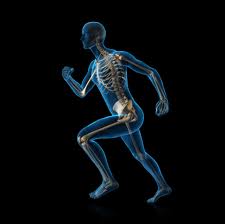– force is defined by the interaction between separate objects- force and magnitude
– physics is primarily concerned with the object on which a force acts
Laws of Mechanics
1. an object is in mechanical equilibrium if the forces that act on the object are balances, resulting in no change of its velocity
2. if instead a set of unbalanced forces acts on the object, it accelerates proportional to the magnitude of the net force, and in the direction in which the net force acts.
3. any two interacting objects exert equal but opposite forces upon each other (called an action-reaction pair)
Definition of Life
a) metabolism and growth
b) recognition of external stimuli/ability to respond
c) reproduction
– organisms more often exert forces to prevent motion
– mechanical stimulus detection is the question of why we are sensitive to environmental forces, in particular gravity and the various contact forces
– muscle tissues in physiology are distinguished on the basis of their functional purpose
-this leads to the relation between design and function in living organisms: skeletal muscles that are attached to bones, smooth muscles that surround abdominal organs and blood vessels and cardiac muscles that operate the heart
– there are three types of skeleton involved in the animal kingdom
– jellyfish and certain types of worms contain a hydrostatic skeleton against which their muscles operate
– hydrostatic skeleton consists of a liquid held under pressure in closed body compartments
– muscle action causes rhythmic reshaping of the body
– an external rigid or semi rigid skeletal structure is called an exoskeleton
– it provides protection and static support for soft tissues
– the exoskeleton plates are connected by elastic tissue to provide good flexability, particularly along the legs
– a muscle can only contract actively, but then has to be stretched passively as another muscle contracts. This is called antagonistic action.
-bumblebees can survive in cooler climates because they can raise their body temperature through rapid wing movement
– the muscle action in the case serves as the purpose of increasing the animals metabolism, of which heat dissipation is a by-product.
– the final type of skeleton is the internal skeleton of vertebrates called the endoskeleton
– most primitive is the notochord, found in cartilaginous bone of fish
– skeletal muscles consist of bundles of fibres running the length of the muscle
– each fibre is a cell, which Is subdivided into smaller repetitive units called myofibrils
– in the elongated direction the myofibril is divided into sarcomeres, the basic contractile units of muscles
– sarcomeres are confined at both ends by stiff Z discs
– action filaments are anchored in these discs
– myosin filaments bridge the gap between the action filaments of two adjacent Z- discs
– actin proteins are present in all eukaryotic cells as they form part of the cytoskeleton, allowing the cell to bear tensile (pulling) forces
– the myosin protein acts as a motor molecule by walking along the actin rods
– this combined action of both proteins evolved early and was applied by amoeba to move with false feet
– the microscopic mechanism of muscle contraction is called the sliding filament model
